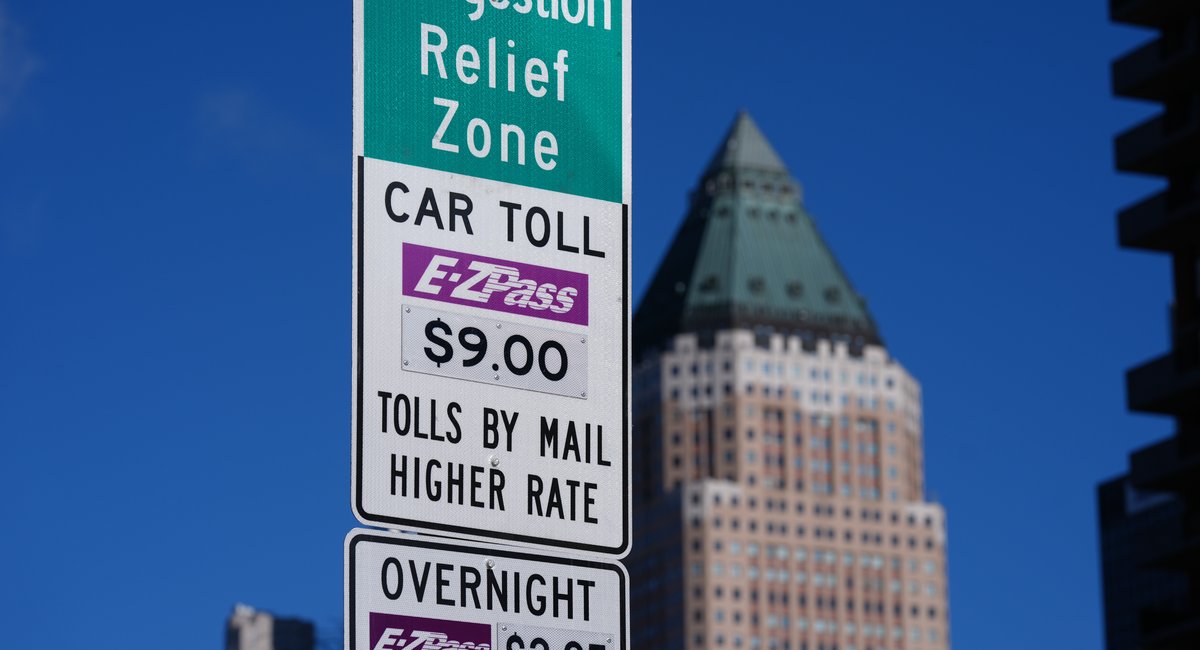Congestion pricing is in full swing in much of Manhattan — presenting a new avenue for phishing scammers to pose as legitimate tolling agencies.
Toll phishing — a scheme in which scammers pretend to be real billers in order to collect sensitive information or payments from victims — was already a problem targeting New York City drivers.
Even before congestion pricing took effect last Sunday, the official Tolls by Mail New York system was warning it had been notified of a text-message scam that attempts to collect on behalf of the purported “NY Tolls Services.”
“Please be advised this is NOT an authorized communication from E-ZPass or the toll agencies associated with E-ZPass,” a notice on the system’s website reads. “We advise you NOT to access the website contained within the message if you should receive one. E-ZPass New York will never ask for a customer’s date of birth, Social Security number or other personally identifiable information.”
The MTA also says it will not collect any fines or late fees during the first 60 days of congestion pricing. That means drivers should be extra-suspicious of notices claiming they owe any amount other than the congestion pricing charge.
The program charges drivers a base toll of $9 to enter Manhattan south of 60th Street during daytime hours. (Here’s a breakdown of the various charges and exemptions that apply.)
Once the 60-day grace period ends, late fees will apply. The MTA says it charges $5 for a toll that is 30 days past due and $50 for a toll that is 60 days past due.
How to identify a phishing email
Tolls by Mail New York encourages customers to always examine emails from senders they do not recognize before clicking any links, and to forward suspicious emails to the Federal Trade Commission at [email protected] without changing or retyping the subject line.
Drivers can also contact E-ZPass New York’s customer service center at 800-333-8655 (TOLL).
The service also warns customers that a scam email may insist they need to take urgent action to avoid being charged a fee or having their accounts suspended. The email may link to fraudulent websites whose URLs contain strange numbers or symbols, and the message or site may include obvious spelling errors.
In addition to trying to trick victims into sending them payments directly, scammers may also try to trick drivers into disclosing their passwords, login information for legitimate sites, PINs, Social Security numbers, or bank or credit card information, according to Tolls by Mail New York.
A link in a message from a scammer may also include part of a real company or agency name, but it will not go to the legitimate site for that company.
How to actually pay for tolls
All MTA Bridges and Tunnels tolling facilities use cashless systems, meaning scanners will either charge drivers’ E-ZPasses automatically or register their license plates so that they can receive a bill in the mail.
Tolls by Mail New York handles online payments for the MTA, New York State Thruway Authority and Port Authority at TollsByMailNY.com. Drivers who are unsure if a message demanding payment is real can go directly to that site to check, instead of clicking a potentially suspicious link.
Drivers can also pay bills by mail, via phone at 844-826-8400, or in person at certain locations by using a check, credit or debit card, bank account, or cash.
Still, the MTA notes that mailed tolls are less convenient and more expensive than E-ZPass, since E-ZPass comes with a 25% discount. The agency encourages drivers to sign up for E-ZPass here.

